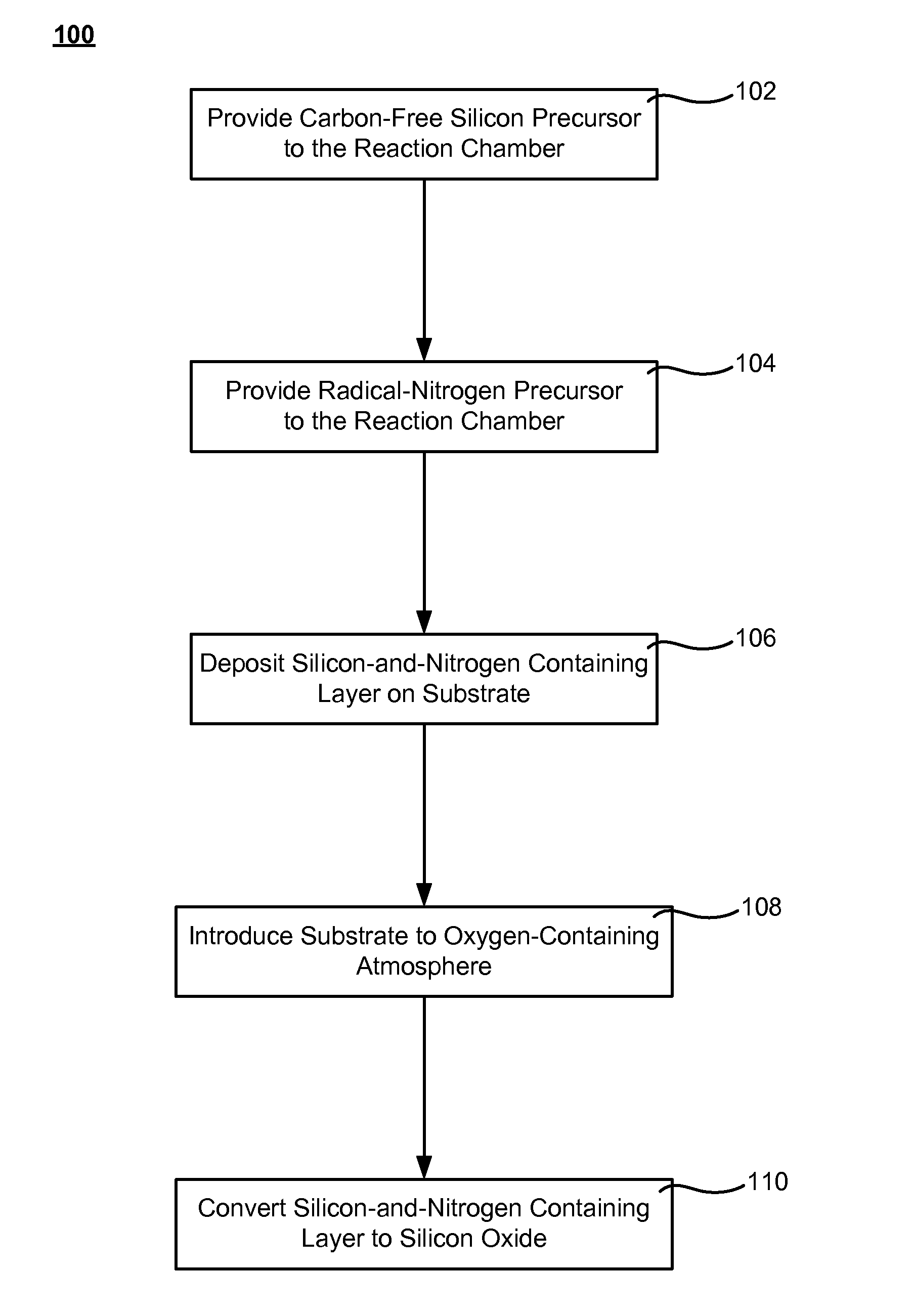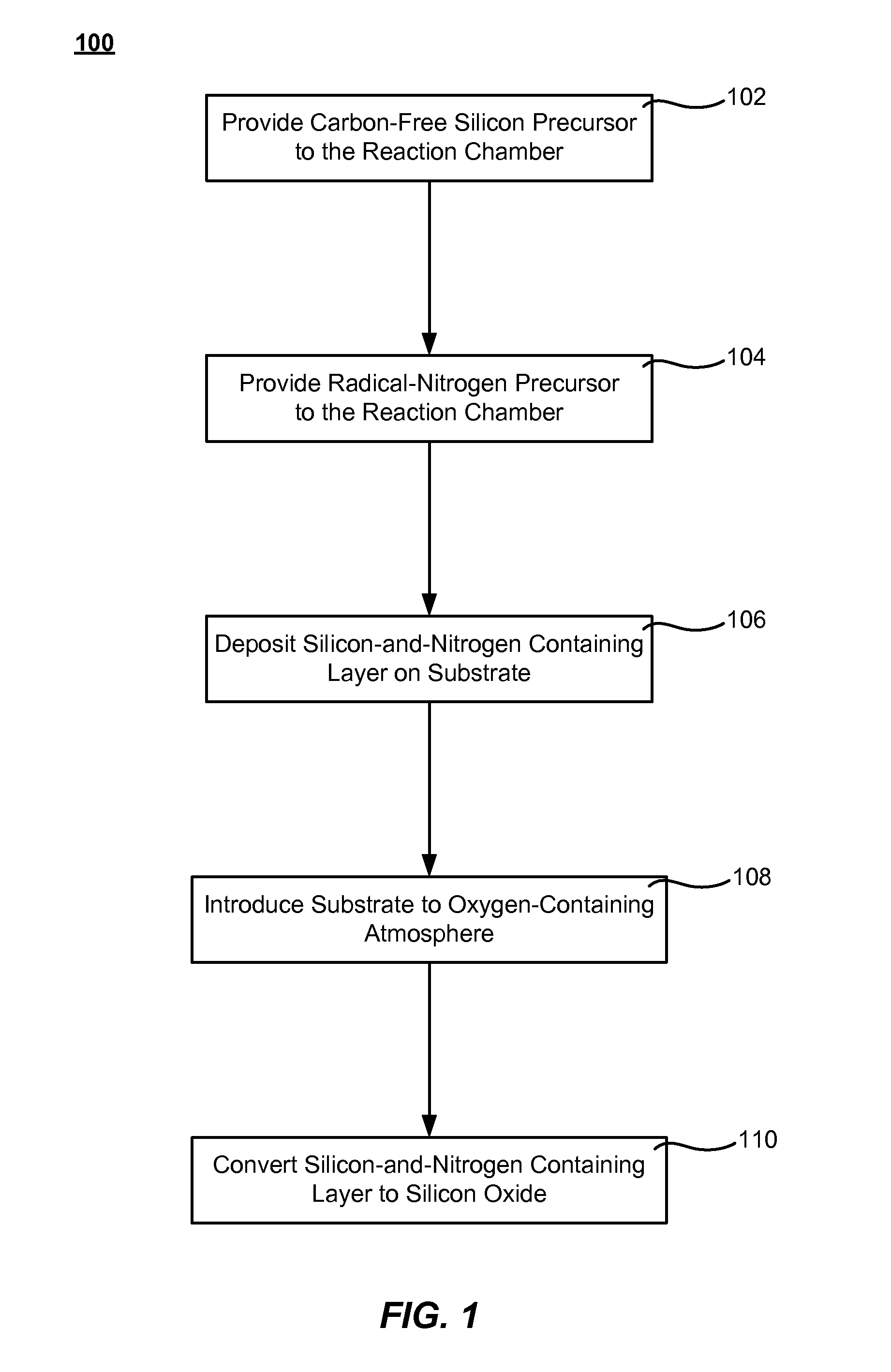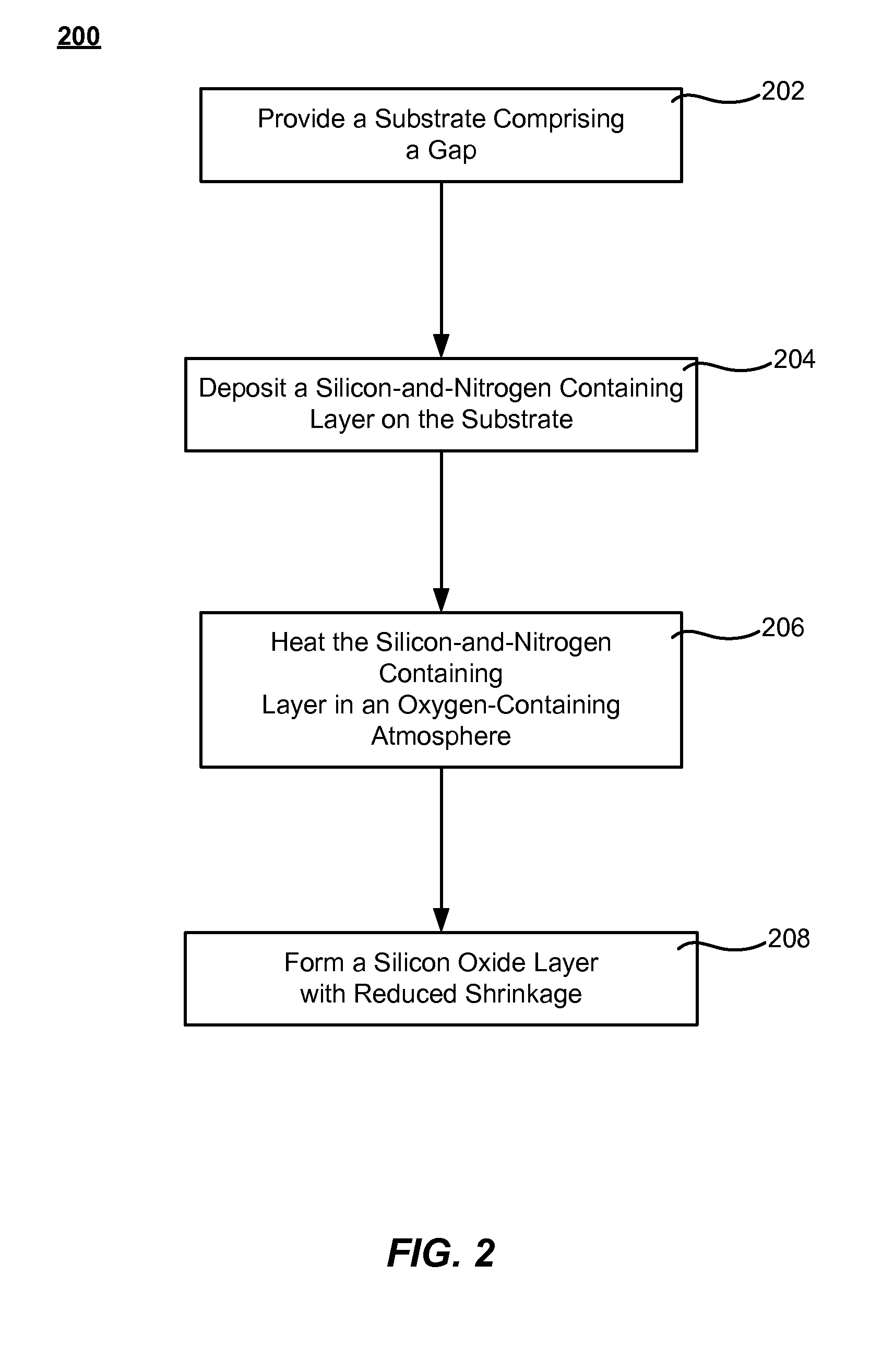Formation of silicon oxide using non-carbon flowable CVD processes
a technology of silicon oxide and flowable cvd, which is applied in the direction of chemical vapor deposition coating, coating, metallic material coating process, etc., can solve the problems of dielectric material, dielectric material, and structural features of the device having decreased spatial dimensions, so as to reduce the size of the gap, less shrinkage, and less pore formation
- Summary
- Abstract
- Description
- Claims
- Application Information
AI Technical Summary
Benefits of technology
Problems solved by technology
Method used
Image
Examples
Embodiment Construction
The formation of a silicon oxide layer with reduced porosity and shrinkage from a flowable silicon-and-nitrogen containing layer is described. The flowable silicon-and-nitrogen containing layer may be formed substantially free of carbon from precursors that lack carbon-containing moieties. When the substantially carbon free silicon-and-nitrogen containing layer is converted to a silicon oxide layer, the absence of carbon in the layer results is less pore formation and shrinkage of the oxide layer compared to the starting silicon-and-nitrogen containing layer. Additional details about the methods and systems of forming the silicon oxide layer will now be described.
Exemplary Silicon Oxide Formation Process
FIG. 1 is a flowchart showing selected steps in methods 100 of making silicon oxide films according to embodiments of the invention. The method 100 includes providing a carbon-free silicon precursor to a reaction chamber 102. The carbon-free silicon precursor may be, for example, a s...
PUM
| Property | Measurement | Unit |
|---|---|---|
| Fraction | aaaaa | aaaaa |
| Width | aaaaa | aaaaa |
Abstract
Description
Claims
Application Information
 Login to View More
Login to View More - R&D
- Intellectual Property
- Life Sciences
- Materials
- Tech Scout
- Unparalleled Data Quality
- Higher Quality Content
- 60% Fewer Hallucinations
Browse by: Latest US Patents, China's latest patents, Technical Efficacy Thesaurus, Application Domain, Technology Topic, Popular Technical Reports.
© 2025 PatSnap. All rights reserved.Legal|Privacy policy|Modern Slavery Act Transparency Statement|Sitemap|About US| Contact US: help@patsnap.com



